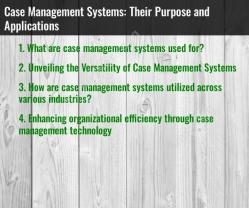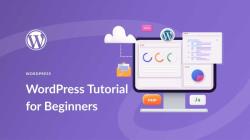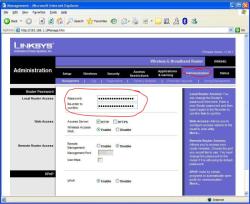How to master WordPress?
Mastering WordPress involves learning how to efficiently use its features, customize its appearance and functionality, optimize performance, and manage content effectively. Here's a comprehensive guide for beginners to master WordPress:
Getting Started: Familiarize yourself with the basics of WordPress:
- Sign up for a WordPress.com account or install WordPress.org on your own hosting server.
- Explore the WordPress dashboard and learn about its various sections such as Posts, Pages, Media, Appearance, Plugins, and Settings.
Learn the Basics of Content Creation:
- Create your first post and page.
- Understand the difference between posts and pages and when to use each.
- Learn how to add media (images, videos, audio) to your content.
- Practice formatting text using the WordPress editor (e.g., bold, italic, headings).
Customize Your Website's Appearance:
- Choose a WordPress theme that suits your website's style and functionality needs.
- Customize the theme by changing colors, fonts, layout, and adding a logo.
- Explore theme options and settings to make your website unique.
Extend Functionality with Plugins:
- Install essential plugins for security, SEO, performance optimization, and functionality enhancement.
- Learn how to search for, install, activate, and configure plugins.
- Be cautious not to overload your site with unnecessary plugins, as they can affect performance.
Understand Basic SEO Principles:
- Learn about on-page SEO techniques such as optimizing titles, meta descriptions, and headings.
- Use SEO plugins like Yoast SEO or Rank Math to help optimize your content for search engines.
- Create high-quality, engaging content that resonates with your target audience.
Master Content Management:
- Organize your content using categories and tags to improve navigation and SEO.
- Learn about the built-in WordPress content types such as posts, pages, and custom post types.
- Utilize the media library to manage and organize your images, videos, and other media files.
Optimize Website Performance:
- Implement caching mechanisms using plugins like WP Super Cache or W3 Total Cache.
- Optimize images to reduce file size and improve page load times.
- Use a content delivery network (CDN) to distribute your content globally and speed up delivery.
Practice Security Best Practices:
- Keep WordPress core, themes, and plugins updated to patch security vulnerabilities.
- Use strong passwords and implement two-factor authentication.
- Install a security plugin like Wordfence or Sucuri to monitor and protect your site from malicious attacks.
Learn from Resources and Communities:
- Take advantage of online resources such as WordPress tutorials, forums, blogs, and documentation.
- Join WordPress communities and forums to ask questions, share knowledge, and network with other WordPress users and developers.
Experiment and Continuously Improve:
- Experiment with different themes, plugins, and customization options to find what works best for your website.
- Stay up-to-date with the latest WordPress updates, trends, and best practices.
- Continuously seek feedback from users and make improvements to enhance user experience and achieve your website goals.
By following these steps and continuously practicing and learning, you can gradually master WordPress and build impressive websites tailored to your needs.
Mastering WordPress: A Step-by-Step Guide
WordPress offers a vast world to explore, from basic website creation to advanced customization. Here's a roadmap to guide you on your journey:
1. Mastering the Fundamentals:
- Start with the basics: Learn how to set up your website, navigate the dashboard, create pages and posts, and manage media.
- Theme basics: Understand how themes control your website's design and learn to install, customize, and choose child themes for deeper control.
- Plugins: Discover the power of plugins to add functionality like contact forms, SEO optimization, social media integration, and more. Understand how plugins interact and potential conflicts.
- Content management: Master creating compelling content, including text formatting, images, videos, and embedding other media. Optimize your content for search engines with basic SEO techniques.
2. Exploring Advanced Features:
- Custom post types: Go beyond basic pages and posts to create custom content types like products, testimonials, or portfolios.
- Theme customization: Learn basic CSS and HTML to tweak your theme's design and style elements. Utilize developer tools for advanced customization.
- Child themes: Create child themes to safely modify your theme's code without affecting future updates.
- Custom plugins: If you're comfortable with coding, delve into creating custom plugins to tailor your website's functionality to specific needs.
3. Proficiency in Customization and Optimization:
- Performance optimization: Learn techniques like caching, image optimization, and minification to improve website speed and user experience.
- Security: Understand common WordPress security vulnerabilities and implement best practices like strong passwords, regular backups, and security plugins.
- Accessibility: Ensure your website is accessible to everyone by adhering to WCAG guidelines and using accessibility plugins.
- Ecommerce and marketing: If your website involves online sales, explore WooCommerce and other marketing plugins for setting up shop, accepting payments, and managing marketing campaigns.
Additional Tips:
- Stay updated: WordPress and plugins evolve constantly. Regularly update your website and plugins to ensure security and compatibility.
- Learn from the community: Utilize online resources, tutorials, and forums to learn from other WordPress users and developers.
- Experiment and practice: Don't be afraid to experiment and learn from your mistakes. There are plenty of resources available to help you troubleshoot and fix issues.
Remember, mastering WordPress is a continuous journey. Start with the basics, explore advanced features, and always strive to learn and adapt. The more you practice and experiment, the more confident and proficient you'll become in wielding the power of this versatile platform.













